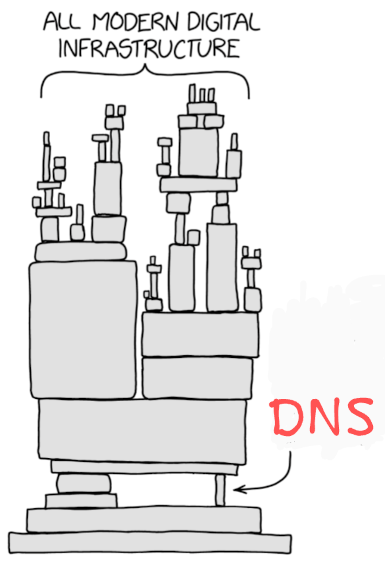NaibofTabr
- 1 Post
- 517 Comments

 31·3 hours ago
31·3 hours agoYou could always try Red Star OS

 1·3 hours ago
1·3 hours agoAh, I didn’t actually look at the Aoostar device you mentioned in your post… yeah you probably don’t want to run TrueNAS on that, something lighter would be more appropriate.
I do want to point out that in this price range you can get a used PowerEdge tower that will be more capable, reliable, repairable and upgradeable long-term. You can add more drives, more RAM, and even a second processor as your needs grow, plus it has a proper backplane with a physical RAID controller and redundant PSUs. If any of the electronics in that R1N100 fail you have to replace the whole device.
Of course it’s a lot bulkier, so it might not fit your use.

 1·5 hours ago
1·5 hours agoMy priorities are ease of installation and administration, as well as reliability.
How much of a priority is reliability? How many drives are you running, and how many of them are mirrored or hot spares? or are you running one of the striped RAID levels?
Hard drives are consumables and should be expected to fail. Data redundancy is a fundamental requirement for reliability. Probably everything else in the server is disposable/replaceable, but the data isn’t.
TrueNAS makes management of mirrored drive pools easy, and frankly 1:1 mirroring is the most sane way to handle redundancy (vs. parity striping), and you should always have at least one hot spare in the pool as well. For instance, I have five 8TB drives in a TrueNAS server - two mirrored pairs, and the fifth is a hot spare. I have 40TB of drive space but only 16TB of storage, but when an active drive fails then TrueNAS will automatically bring the hot spare online and copy the data from the mirror of the failed drive onto it and alert me that a replacement drive is needed. This is easy to set up, and TrueNAS also automates SMART testing and will attempt to load balance read & write cycles based on drive age and performance.

 8·8 hours ago
8·8 hours agoI bet GeForce didn’t do the data collection they want, and it was too much trouble to try and shoehorn it in, so they built a new app. I bet there’s user data collection in there related to their AI business.

 111·1 day ago
111·1 day agoNever ascribe to malice what can be explained by incompetence.

 81·1 day ago
81·1 day agoYou say that with such confidence, but the counter disagrees.
We all live in denial of something…

Please refer to this helpful diagram:


 11·1 day ago
11·1 day agoWell there’s this place…


 6·2 days ago
6·2 days agoYou guys have a middle class?

 29·3 days ago
29·3 days agoRupert Murdoch is to blame for a lot of it.

 9·3 days ago
9·3 days ago“Space is big. You just won’t believe how vastly, hugely, mind-bogglingly big it is.”

 4·3 days ago
4·3 days agoThe biggest question is, do you think your tax percentage will be higher now, or higher in the future? If you think your income might increase later (placing you in a higher tax bracket), or that the government might increase your tax burden later, then it’s better to pay taxes now.

 23·3 days ago
23·3 days ago(D), in case anyone was in doubt. Also:
The Car Privacy Rights Act is cosponsored by Senator Elizabeth Warren (D-MA)

 622·3 days ago
622·3 days agoI mean… what is your threat profile? Are you a LastPass engineer with an unpatched Plex install and access to the company file server? (edit: LastPass not LinkedIn)
Are you going to do something that would attract the attention of law enforcement or nation-state threat actors?
Are you going to be using this mini PC to do your taxes?
Is it going to be in a DMZ with open access to the Internet?
Are you going to use it as an authentication server for other critical assets?
If you aren’t assessing your risk level with some realistic idea of what threats actually apply to you and weighing that against the possible consequences of a breach, then you’re pointlessly worrying about low-probability scenarios. Operational Risk Management right? Judge your risk by probability of occurrence and severity of impact and then make decisions based on that.

 7·5 days ago
7·5 days agoThis is a constraint designed into bitcoin to produce artificial scarcity so that the volume of tokens doesn’t massively inflate and destroy their value. A blockchain doesn’t have to operate this way if the goal is to produce unique tokens as identifiers rather than as currency.

 21·5 days ago
21·5 days ago

 12·5 days ago
12·5 days agoYeah, there’s nothing wrong with blockchain technology, but Surprise! the people most interested in unregulated financial systems are thieves and scammers. Who could have guessed.

 21·7 days ago
21·7 days agoIn the current market, you want a printer that runs Klipper. The system will typically include a web application that controls the printer (Fluidd, Mainsail, or Octoprint) running on an embedded RPi. You just access this through your browser, it’s not necessary to install anything on your PC.
You will need to install a slicer software. The slicer is sort of the equivalent of a document editor - it’s how you prepare the 3D file for printing. Your printer manufacturer will probably recommend or distribute a particular slicer, but the file format used for 3D printing (G-code) is an open standard published by NIST. Any slicer software can be used to output gcode for printing - you can use whatever you feel comfortable with.
Personally I reccomend Orca Slicer or SuperSlicer but there are many options.
By the way, the entire market of home 3D printers grew out of the RepRap project that started 20 years ago. The original project was open hardware and software, and so almost all of the software in use today is open because open source principles were the foundation of all of it. There are some companies in the field who keep their stuff proprietary, but frankly I avoid their products and consider them to be anathema to the 3D printing community.



“Maybe if we beat it harder, more money will fall out!”
~Disney execs probably